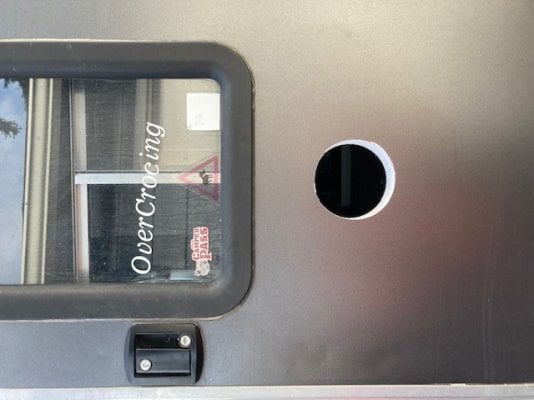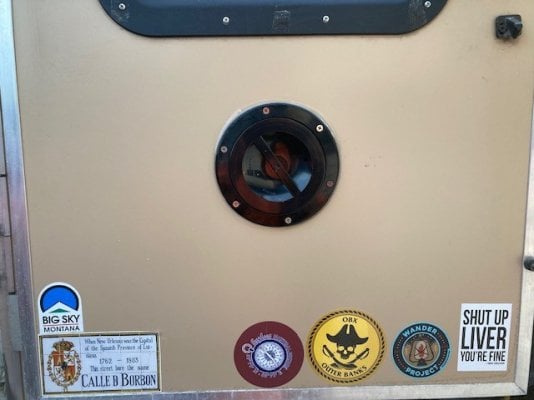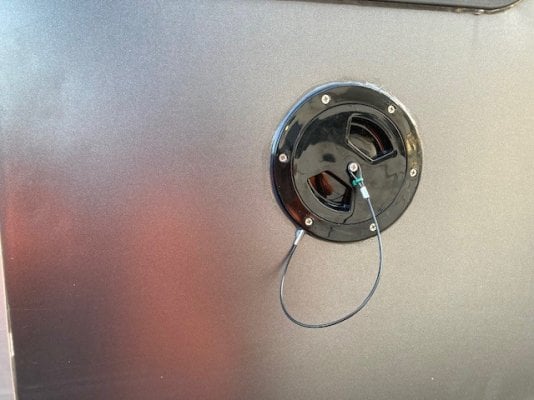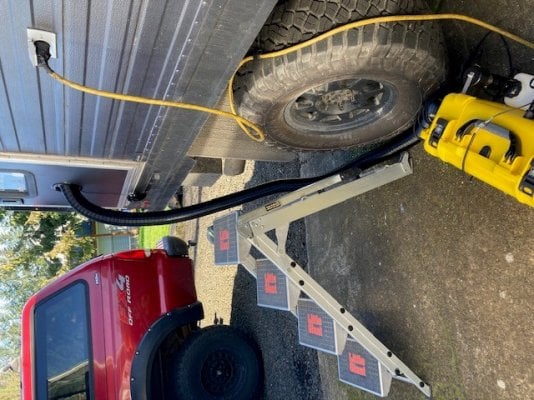Old Crow
Searching....
I'm trying to remember the small issues I had when I first got mine. And I want to write those down in case I need them later. For those readers with no interest in Planar heaters, you may want to skip this...Wango said:Quote
Have one of the Planar kits on order, will be wanting to use it in both our Gazelle tent, when we are taking the jeep, and the main camper truck. Both are diesel, so is a plus, now i have to find the vent for the ATC camper to hook the hose to, and then get the nerve to cut a hole in the side.
Thanks to all for this great post!
1- Fuel knob is unmarked as to which way to turn it to open or close. If I remember correctly the laminated cheat sheet of instructions just says open it but doesn't say how. Counterclockwise to open, clockwise to close. Lefty opie, righty closey.
2- If you forget to open the fuel valve (as I once did), the signs of that are kind of subtle. The heater sounds like it's going through the normal start. You hear the fan test and, after a long wait, the initial clunks of the fuel pump. It tries ignition but something seems wrong in the sequence of sounds you normally hear. What it's doing is re-trying. It tries twice more before shutting down. The right side LED on the manual control will be double-blinking red. The double-blink merely means it failed to start so it's up to you to figure out why that might be. I don't quite remember how I got it to try again once I remembered to open the valve. I see the control manual says push any button but I don't remember if I pushed it once to clear the malfunction and again to start or just pushed it once.
3- When you plug the power and control cables in to the heater, the control LED fast-blinks green. But that green LED times out. So it can be a little confusing. By the time you get things fully set up outside and then go inside to push the start button, the LED may be off. If you were expecting it to be green to signal everything's ready for starting, you may think something's wrong when it's actually fine.
4- The heater comes with a laminated cheat-sheet for operating the heater, an operations manual, and a manual for the PU-5 control. Blink-codes for any malfunctions are in the PU-5 manual. Note- It can be confusing to see error-code tables in the some manuals for the 2D but they are for other controls.
5 - The manual for the PU-5 has two flowcharts to show how the control operates. The top one applies. The bottom one is for an installation with an optional remote temperature sensor.
6 - To shut down the heater, press the heat button (wiggly-lines icon) once. The LED will blink red during shutdown.
7 - The manuals for this heater tells us to run it once a month even during the warm season. I just found this paragraph in the installation manual that explains why:
"To ensure reliable operation of the heater, switch it on once a month for 20 minutes on full power, including the warm seasons of the year, when the heater is out of operation. This action is necessary to remove any viscous film sediments on moving parts of the fuel pump. Failure to do so may lead to premature failure of the heater."
I need to do a little better on that and get it on my reminders calendar. I did remember to run it in mid-summer and used it on trips within about 60 days on either side of that in 2022.
8- My portable has an exhaust shield, a flat, round cap atop the vertical exhaust pipe. I figured it was probably a rain shield. But now I see some photos of the portable don't have it or have it but show the end of the exhaust pipe bent over. I called the distributor a few days ago and was told the shield was there to cover the sharp end of the exhaust pipe but they now use a finish ring. The general installation manual for the 2D (which is not specific to it being mounted in a hard case) says a shield is required and says:
"In absence of the shield, air will be blown back into the exhaust pipe. This leads to increased heater shooting and impairs heat capacity." (I assume shooting is supposed to be sooting)
Edited 1/19/23 to add-
9- The fuse holders and fuses on the power cable look a little strange so I called the distributor. Use 25-amp mini-blade (ATM) fuses available most places selling auto parts. I bought a few for spares and they do work.
Edited 1/27/23 to add:
10- Current draw goes back up to nearly 10 amps again during shutdown to burn off residual fuel.




